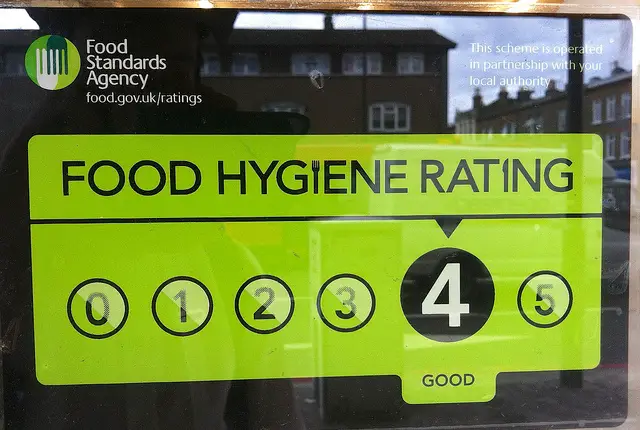This in from the council, in their own words. Ed
Over 1,800 Isle of Wight businesses that serve food have a four or five out of five rating for food hygiene standards.
This represents more than 90 per cent of businesses that are rated under the government’s food hygiene rating scheme, which celebrates its fifth birthday this month and has been used by the Isle of Wight Council since 2011. The scheme rates businesses from nought, which means ‘urgent improvement necessary’, to five which means ‘very good’.
Council food hygiene inspectors, who carry out unannounced visits, check everything from hygiene practices, compliance with regulations and management of the business before awarding a score. Organisations are given a sticker showing their rating which they can display in their window.
Who’s covered by it
Ratings are given to any place that you can eat away from home, from everyday cafes, sandwich shops and restaurants, to schools, supermarkets and residential care homes. Businesses selling items such as wrapped sweets, or care at home services, are exempt from ratings.
Councillor Phil Jordan, Isle of Wight Council Executive member responsible for regulatory services, said:
“Food ratings give the public a confident insight into the standard of hygiene in establishments which, in turn, can help them choose where they may want to eat. With Christmas fast approaching this can also be important because those families and people who may wish to eat out over the festival period can ‘look before they book’.
“The scoring also serves to improve standards because no food provider would want to be seen as having a low score rating of course, but it is very encouraging that already 90 per cent of all organisations that serve food have the top two ratings. Those in the other ten per cent now know what they need to do to improve their score and become an acceptable high rating provider of food.”
The food hygiene rating scheme can be found at www.food.gov.uk.





